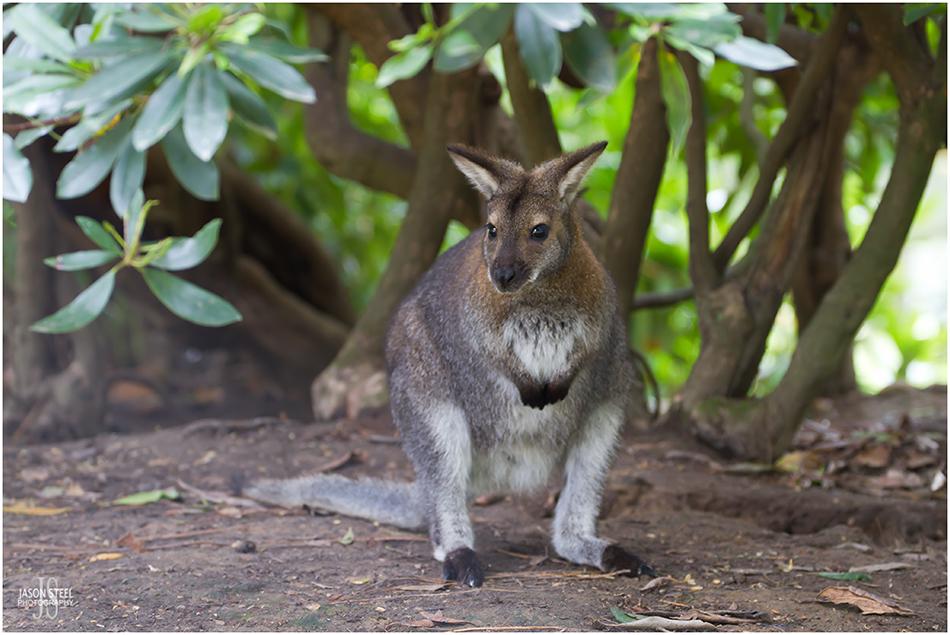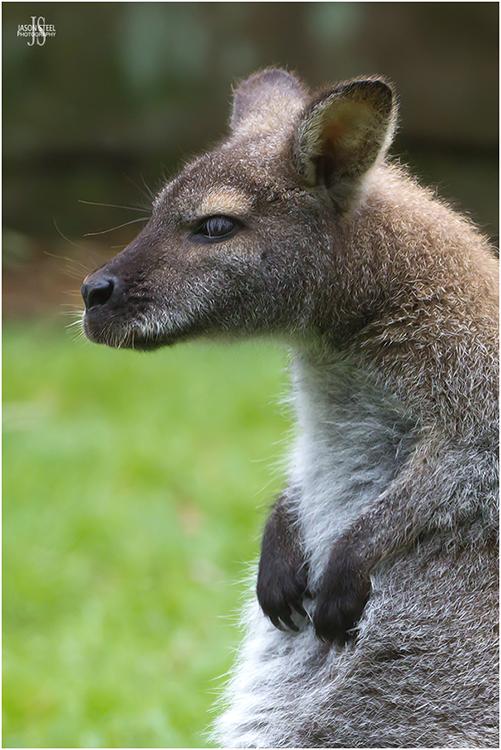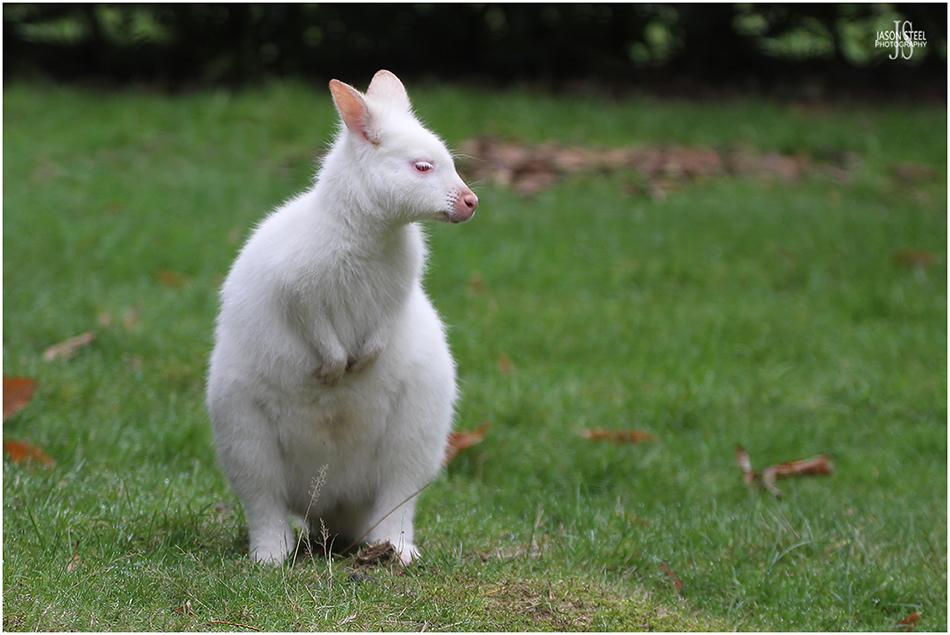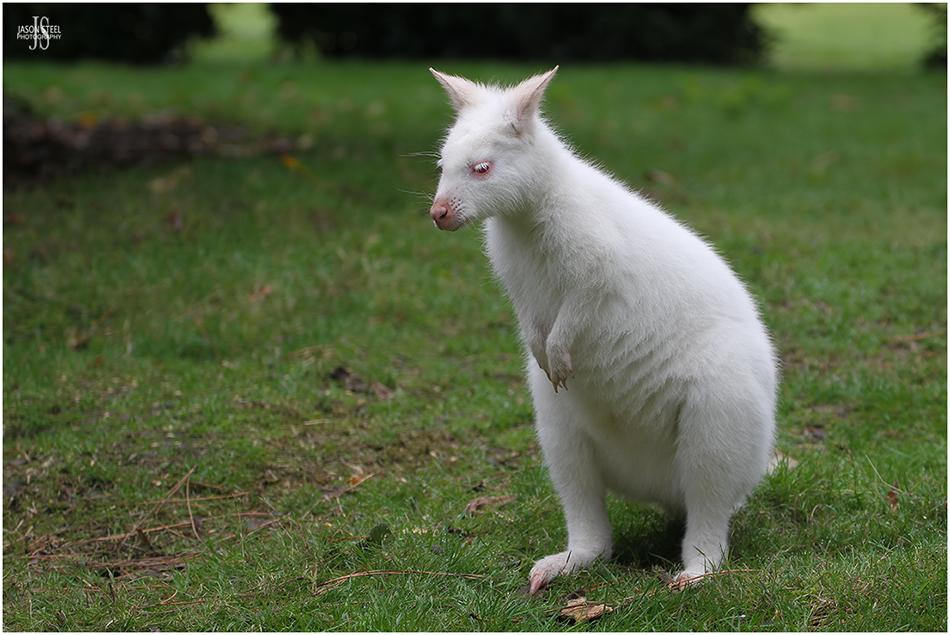Non-Native
This page is for non-native species of wildlife that I've photographed in captivity.
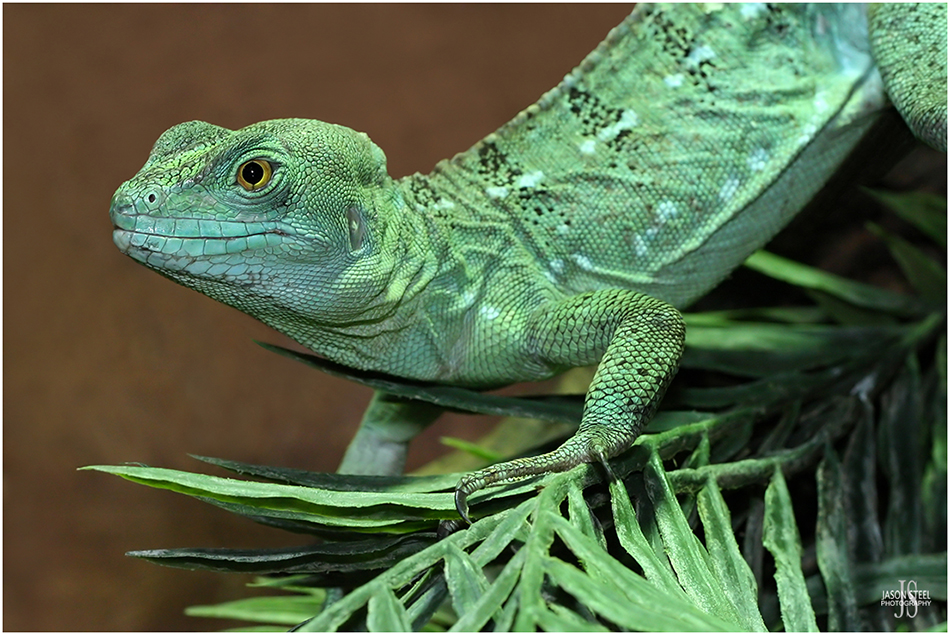
Green Basilisk, photographed in captivity 2011.
Green Basilisk (Basiliscus plumifrons)
The Green Basilisk is a beautifully coloured lizard found mainly in the tropical rain forests of Central America. Known best for its amazing ability to run across the surface of water at great speed. The Green Basilisk spends much of its time in trees and is rarely found too far from a body of water.

Royal Python, photographed in captivity 2012.
Royal Python / Ball Python (Python regius)
The Royal Python is originally found in Africa. It has become one of the most commonly kept snakes in the pet trade because of its stocky build, relatively small size ( 90-120cm ) and its usually placid temperament. They are usually black or dark brown with lighter brown or gold sides and patches but selective breeding in captivity has resulted in many different patterns and morphs being available in the pet industry. They are also known as Ball Pythons because of their unusual defence strategy which involves the snake rolling itself into a tight ball with the head hidden when threatened.
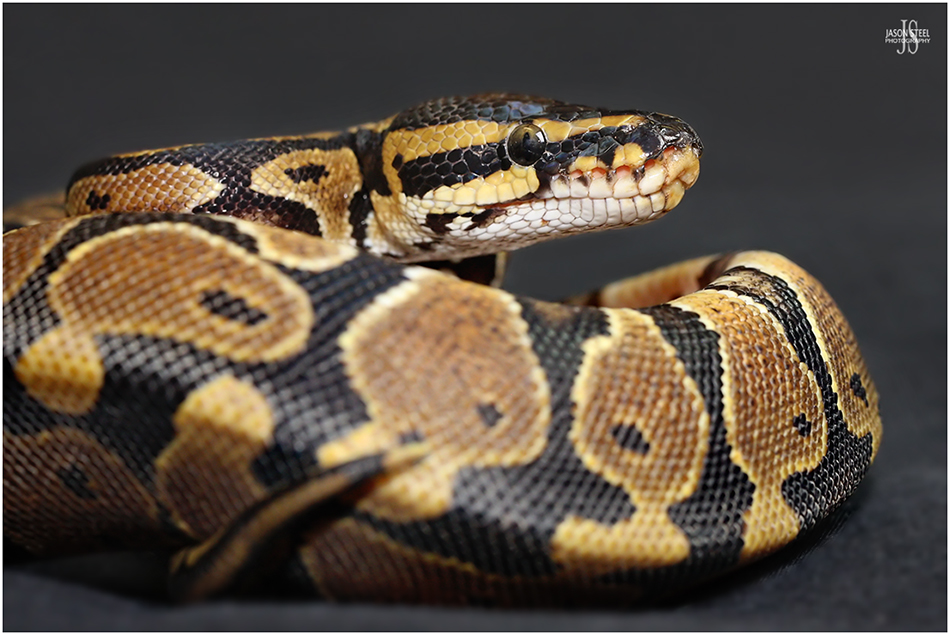
Royal Python, photographed in captivity 2012.
In the wild the Royal Python is generally a terrestrial species although like most snakes they can climb well if they need to. They usually inhabit disused mammal burrows and other underground hiding places. Like all pythons Royal Pythons are constrictors feeding almost entirely on small mammals but they have also been known to take birds on occasion.
On 11th September 2020 the BBC reported on a captive Royal Python, held at the Saint Louis Zoo in Missouri, USA, produced a batch of fertile eggs despite the snake having no contact with a male snake for over 15 years. What makes this story even more remarkable was the age of the snake. At 62 years old this Royal Python was believed to be the oldest living snake. Prior to this the oldest documented Royal Python to date was a male specimen held at Philadelphia Zoo, which died at the age of 47. LINK
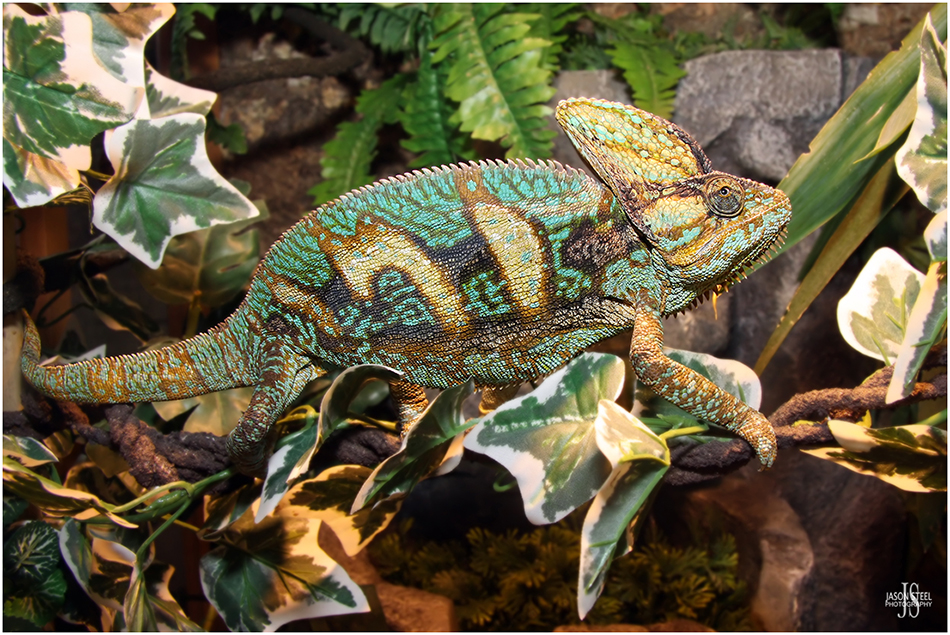
Yemen Chameleon, photographed in captivity 2008
Yemen Chameleon (Chamaeleo calyptratus)
The Yemen Chameleon (also known as the Veiled Chameleon) is one of the many exotic reptiles that has recently become fairly commonly kept in the UK pet trade. They can occasionally grow to an impressive 24 inches in length but half of this length is tail. Adult males are easily identified by their bright markings and the prominent veil on top of their head.
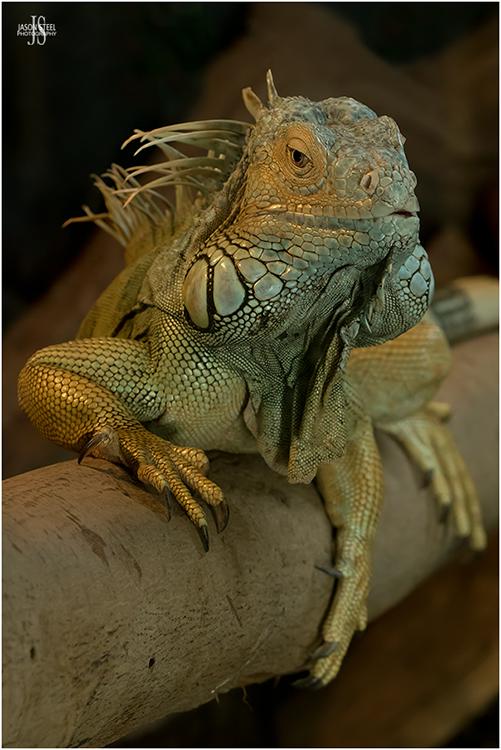
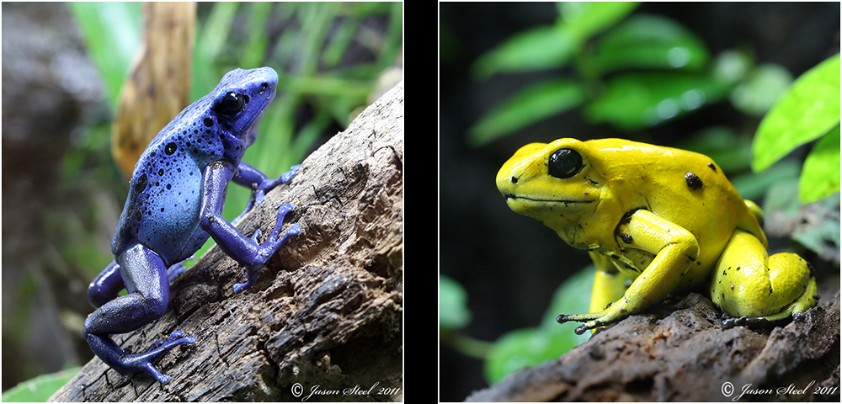
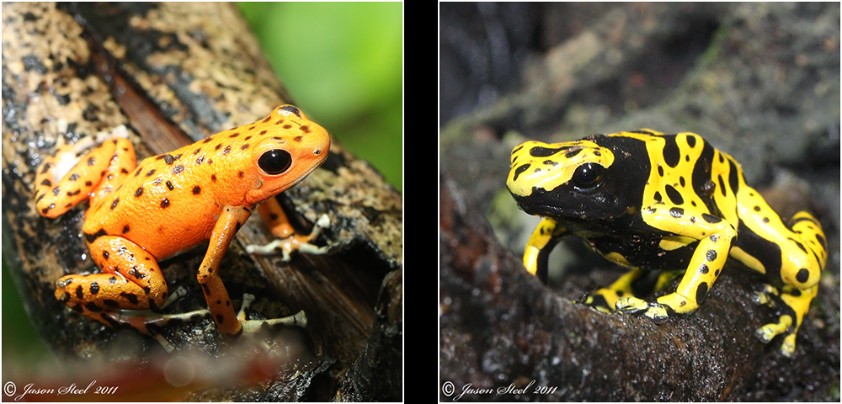
Various Poison Dart Frogs, photographed in captivity, 2011.
Poison Dart Frogs
Although very small the Poison Dart Frogs are considered to be one of the most poisonous creatures on the earth. Generally found in the tropical rainforests of Central and South America they vary considerably in colour and pattern with many species. Unlike most frogs the Dart Frogs are diurnal meaning they are mostly active during the day time.
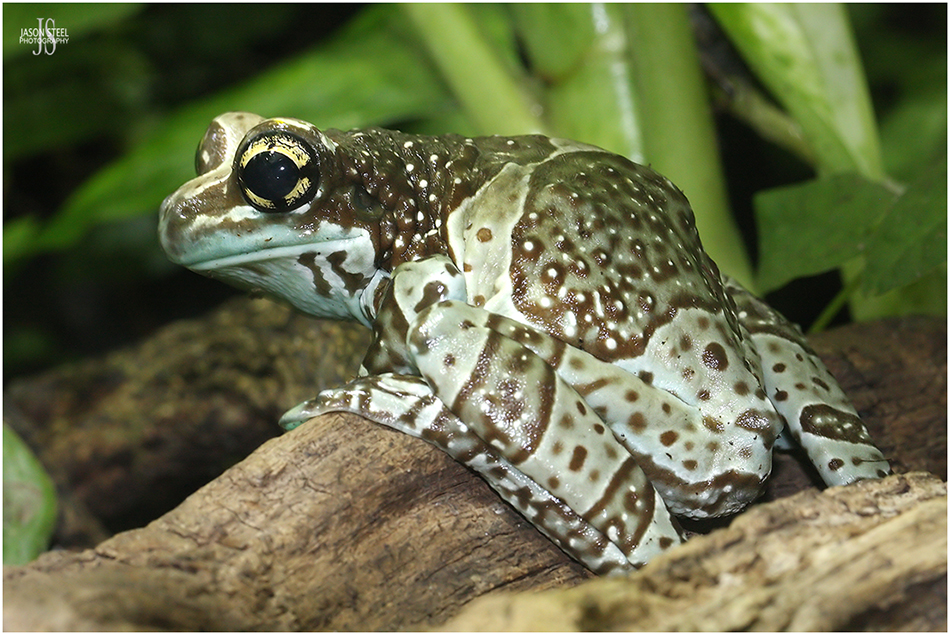
Mission Golden Eyed Tree Frog, photographed in captivity 2011.
Mission Golden Eyed Tree Frog / Amazon Milk Frog (Trachycephalus resinifictrix)
Another beautiful frog from the South American Rain Forests. This frog grows to 10cm in length and may never come down from out of the trees. Because of this they are rarely seen but they are often heard with their distinctive loud call.
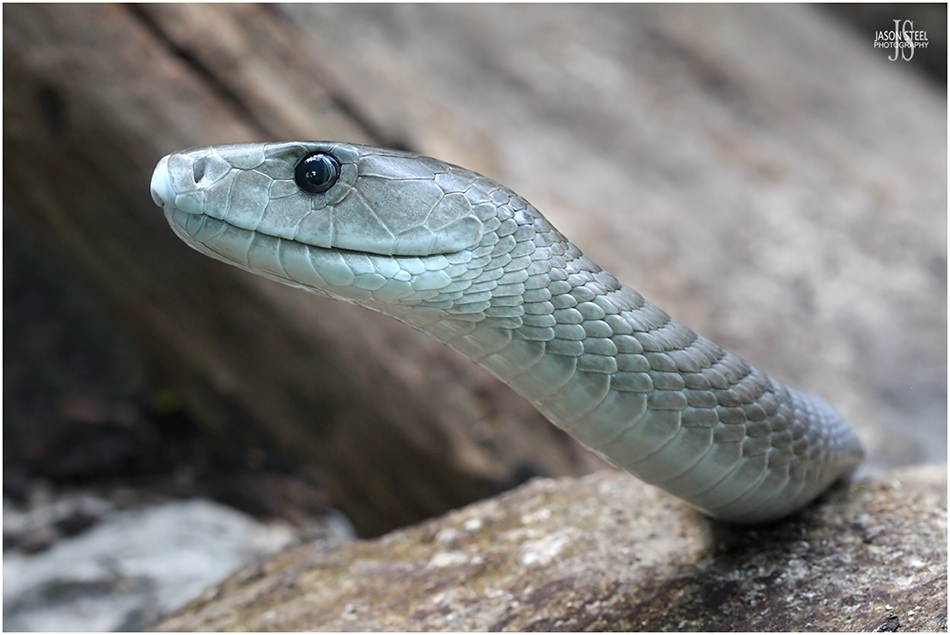
Black Mamba, photographed in captivity 2011.
Black Mamba (Dendroaspis polylepis)
The Black Mamba is the largest venomous snake found in Africa. Measuring up to 14ft in length it is one of the most feared snakes in the world. The Black Mamba is capable of moving across land at speeds of up to 10-12mph making it the fastest snake in the world.
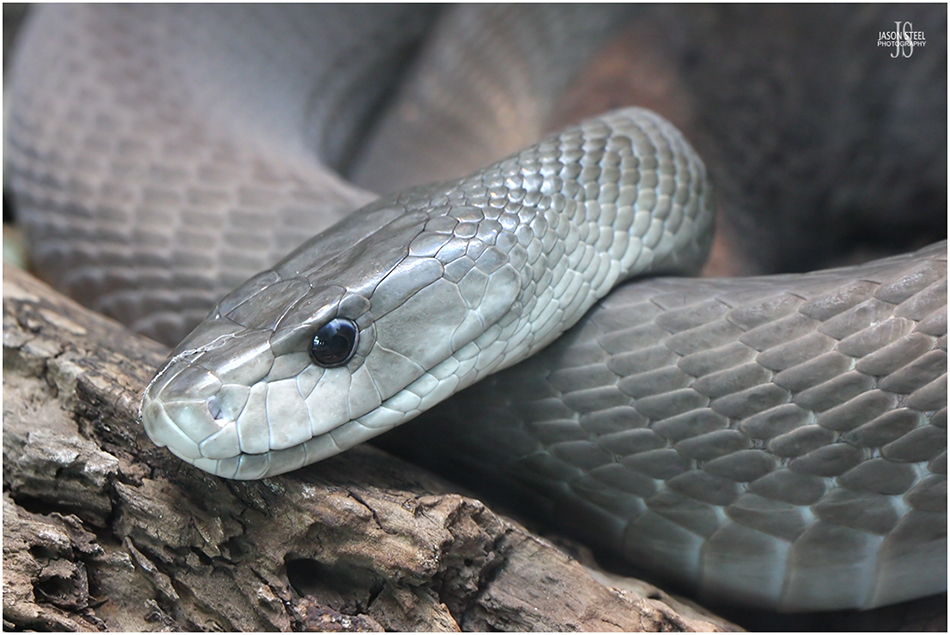
The Black Mamba gets its name from the black colouration of the inside of its mouth and not from its skin colour which can vary from a dull greenish colour to a slate grey colour. A bite from this snake will normally prove fatal to humans unless anti-venom is administered rapidly. Death can occur in as little as 20 minutes but 30-60 minutes is more often the case.
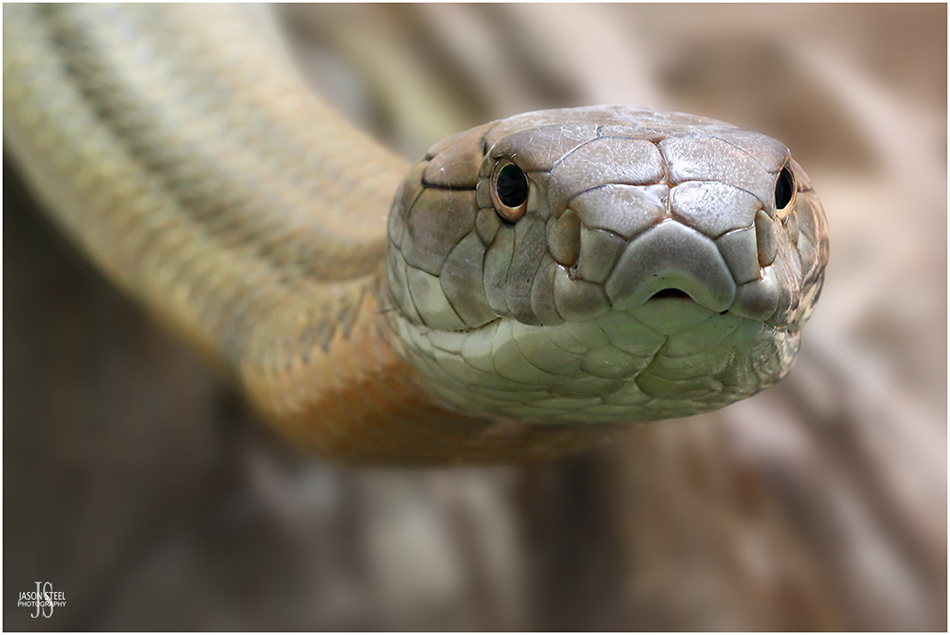
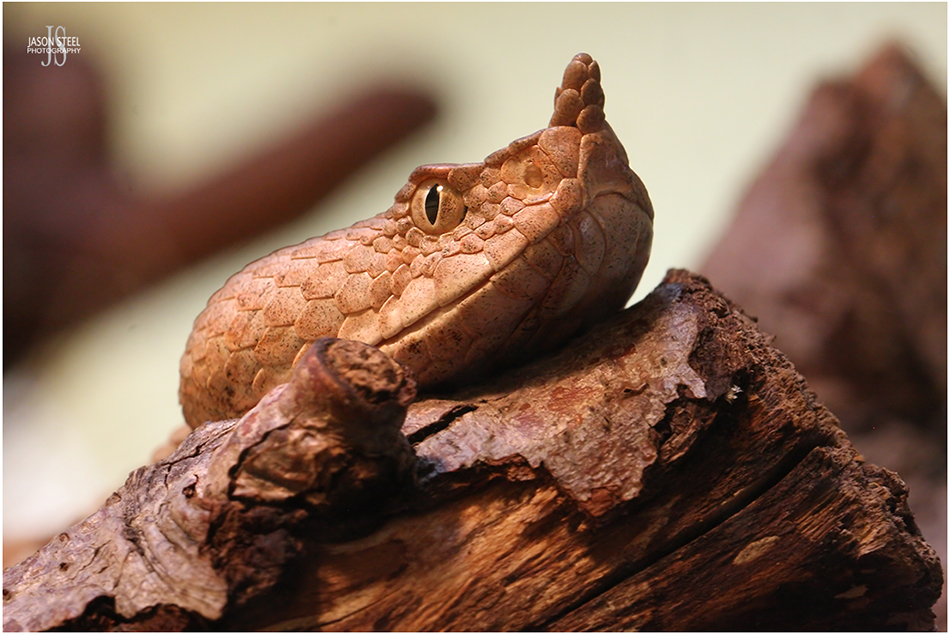
Long Nosed Viper. Photographed in captivity 2011.
Long Nosed Viper - (Vipera ammodytes)
Also known as the Nose-Horned Viper and the Horned Viper. The Horned Viper is the most dangerous of the European vipers and has proved fatal occasionally to humans with 10 deaths known between 1970 -2011. These snakes usually grow up to 80cm in length, but occasional lengths of up to 110cm have been known.
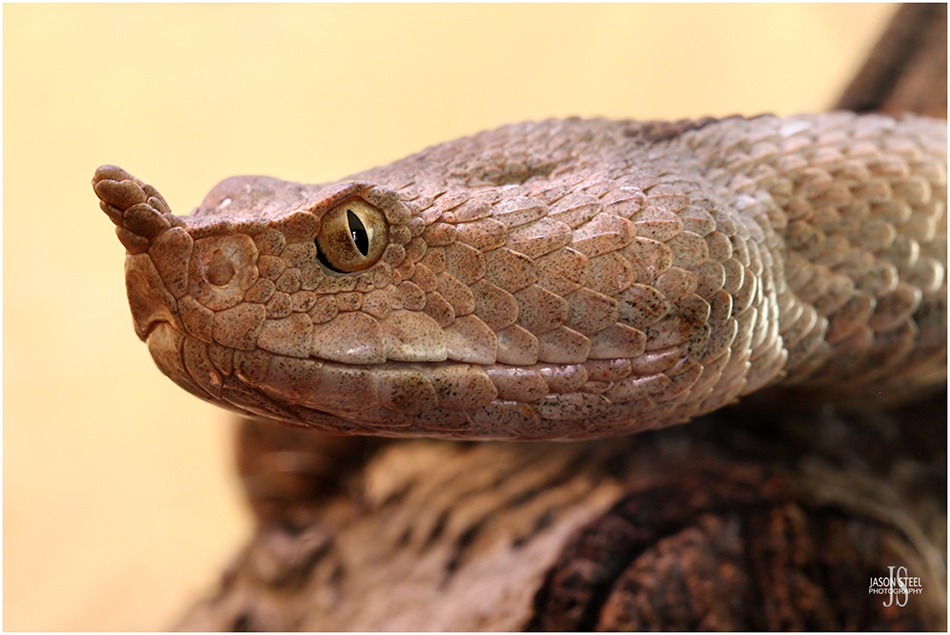
Long Nosed Viper. Photographed in captivity 2011.
The horn on the Long Nosed Viper makes them easily identifiable, but the horn itself is soft and pliable and its purpose is still unknown by herpetologists. Colours of this species can vary greatly, but the males usually have brighter colours and sharper, more distinctive markings.

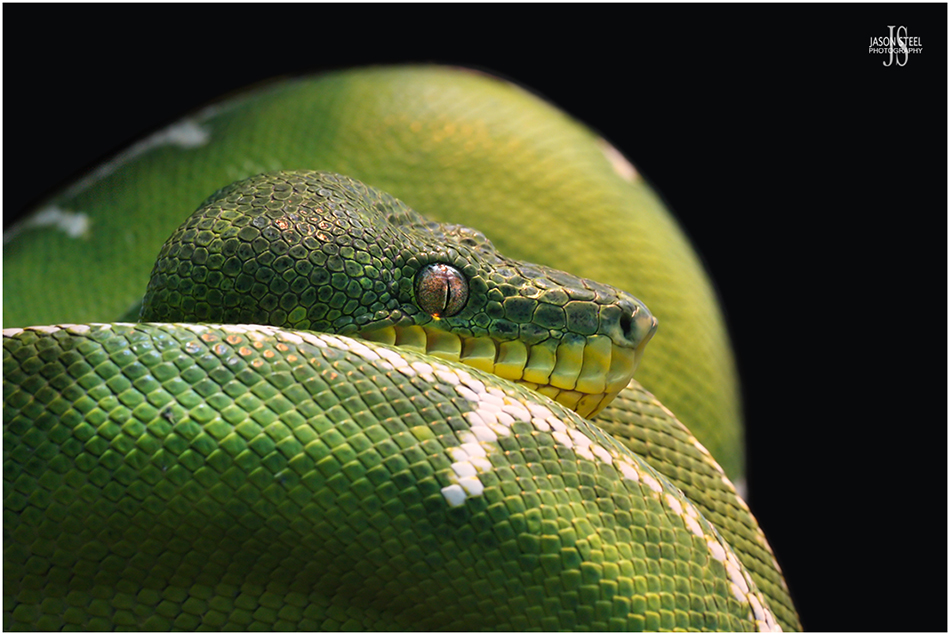

Emerald Tree Boa. Photographed in captivity 2011.
Juvenile Emerald Tree Boas are born orange-red in colour and do not adopt the green colouration until 9-12 months old. These snakes use very little energy coiled on branches and subsequently they may go several months between meals due to their very slow metabolic rate and digestive system. The usual diet of the ETB is small mammals but they will also eat small birds and occasionally lizards in the wild.
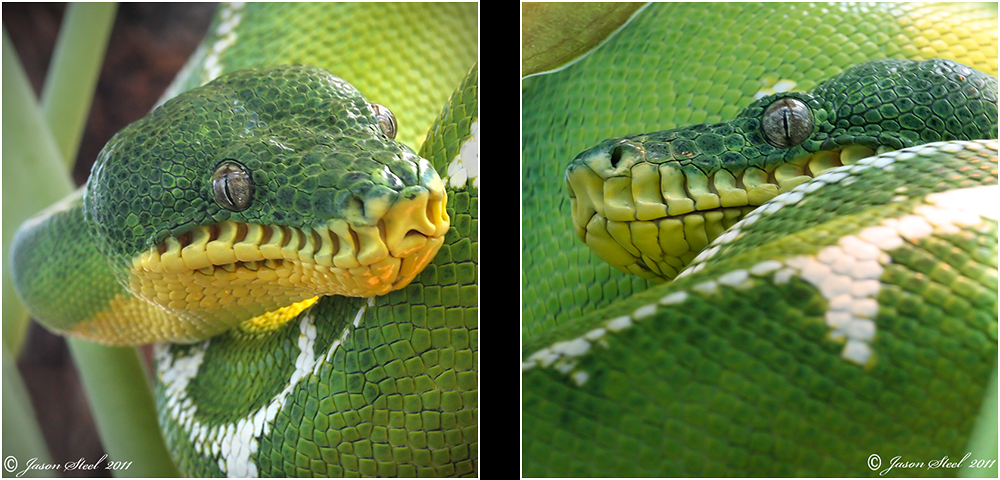
Emerald Tree Boas. Photographed in captivity 2011.
Being strictly arboreal the Emerald Tree Boa is safe from predation on the ground but is vulnerable in the tree tops to predation from large birds of prey such as the Crested Eagle. Unlike many snakes the ETB is viviparous meaning that it does not lay eggs. The female gives birth to fully developed young. The ETB has rows of heat receptor pits along the length of its jaw. These heat pits work using infrared picking up the tiniest of movements by their prey allowing these nocturnal snakes to strike with deadly accuracy even in total darkness.
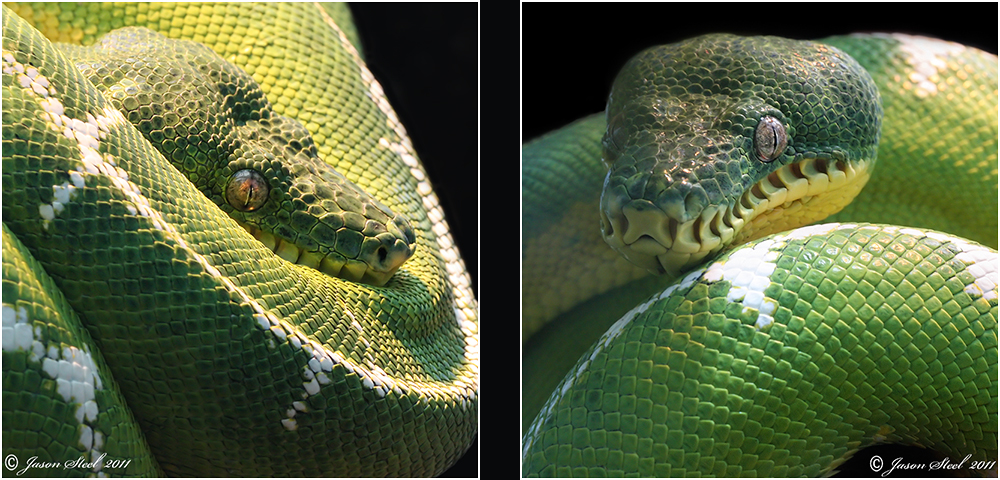
Emerald Tree Boas. Photographed in captivity 2011.
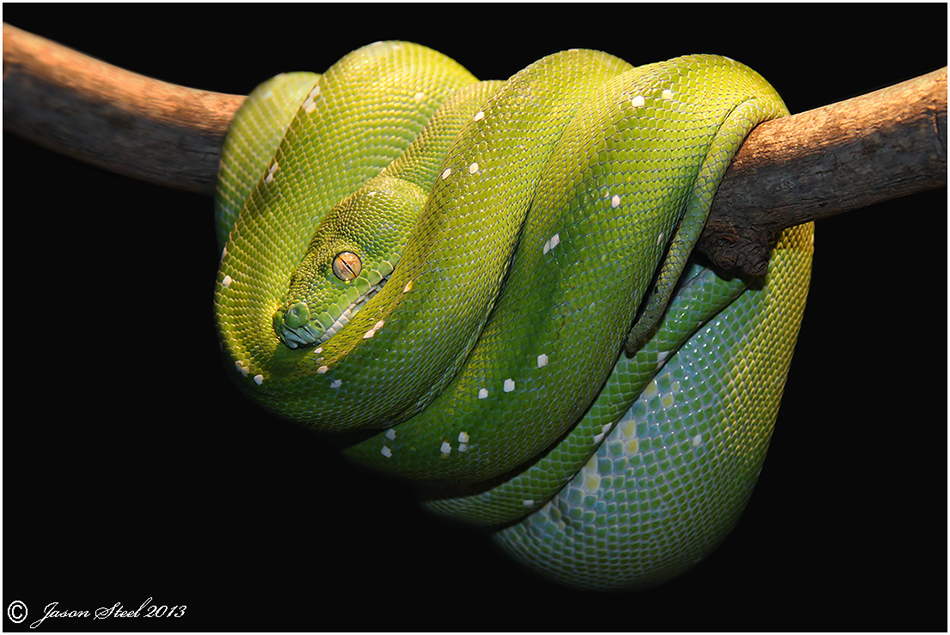
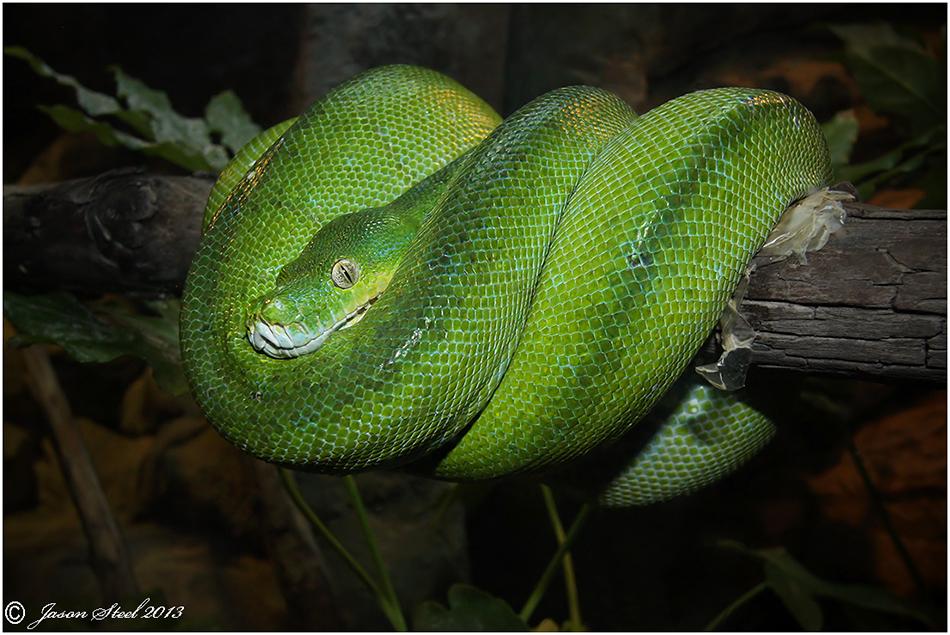
Green Tree Python. Photographed in captivity 2013.
The GTP usually grows to around 5 - 7.5ft in length and can live for over 35 years in captivity. Although non-venomous these snakes do have extremely long needle sharp fangs and can be quite aggressive and may readily strike if disturbed especially after dark when they are in hunting mode. Their heads are considerably larger than their necks with large well developed jaw muscles.
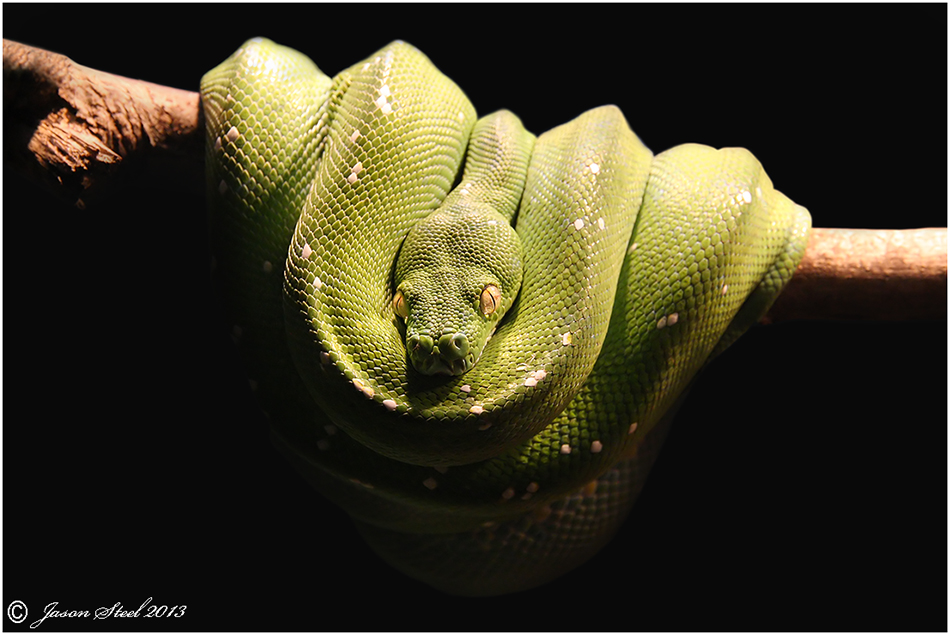
Green Tree Python. Photographed in captivity 2013.
When the GTPs first hatch they are usually bright yellow in colour. Occasionally they can also be bright orange or even red. In the wild GTPs feed on small birds, reptiles and mammals.

Green Tree Python. Photographed in captivity 2013.
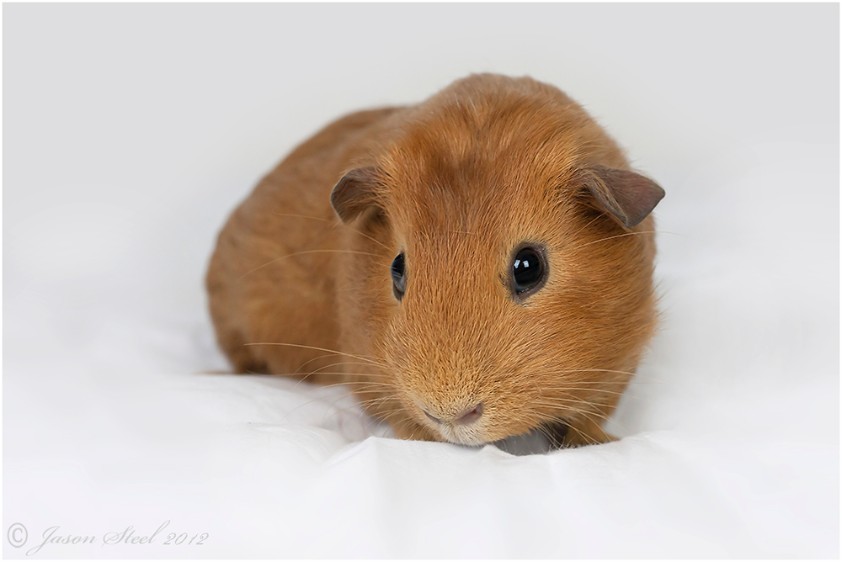
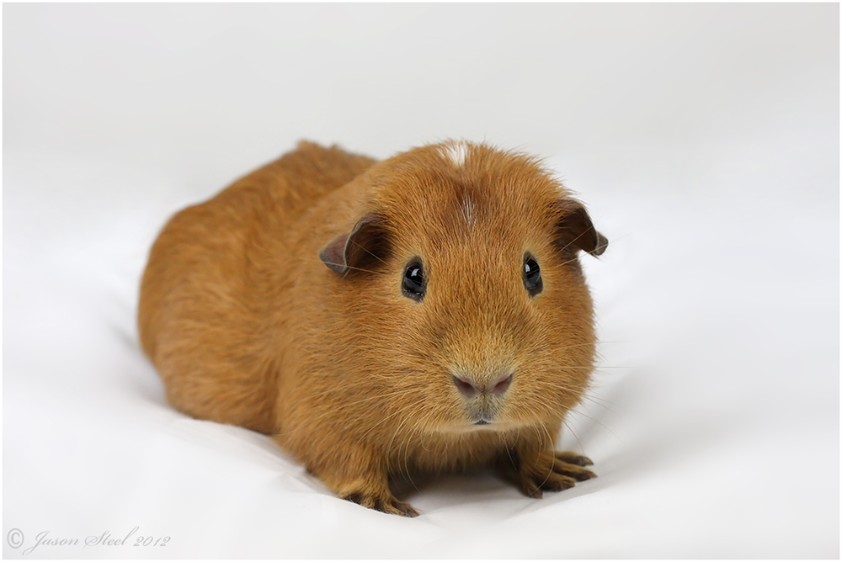
Domestic Guinea Pig. Photographed in captivity 2012.
Although domesticated for many thousands of years the Guinea Pig remains a very nervous and jittery little creature. They often jump around to evade being picked up but usually settle down very quickly once they no longer perceive you as a threat. They are very vocal animals and communicate through a range of distinctive noises.
